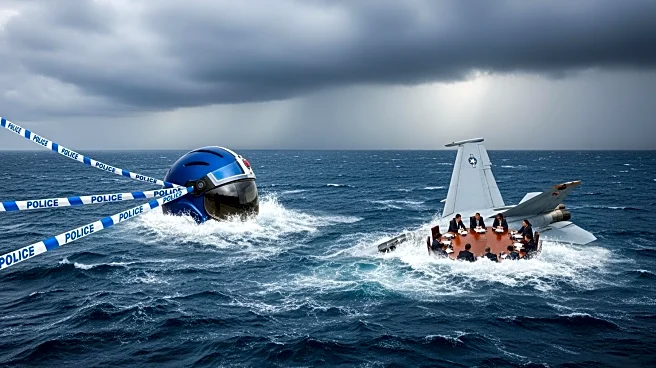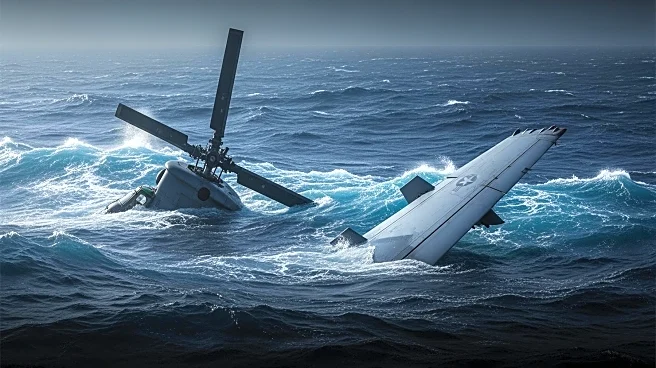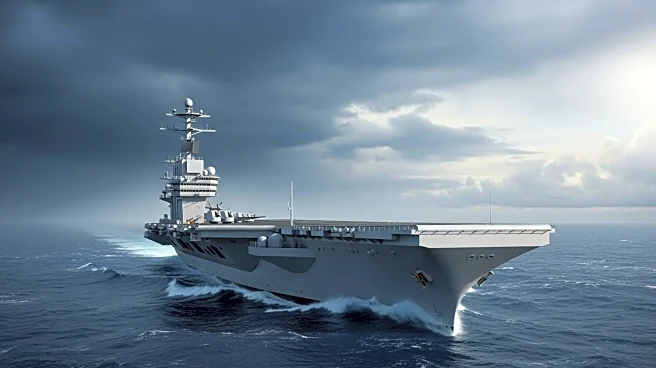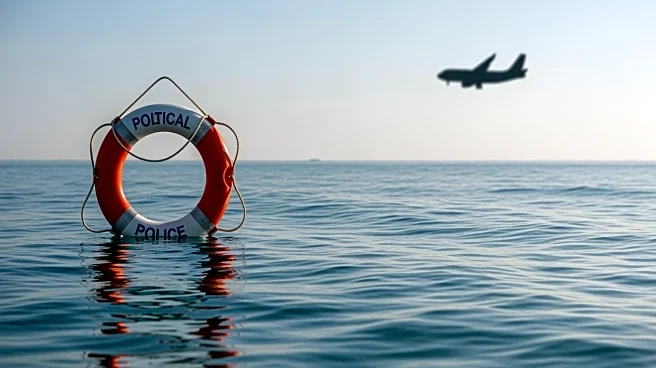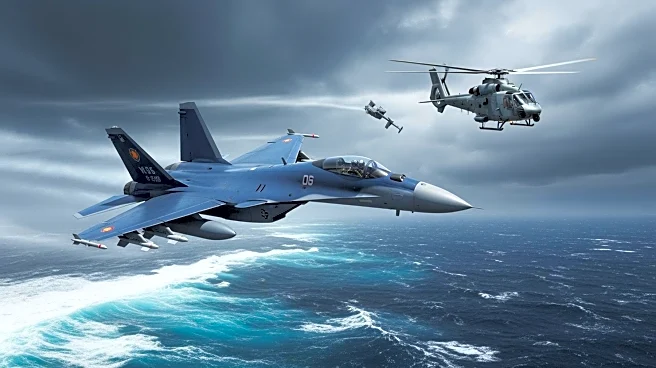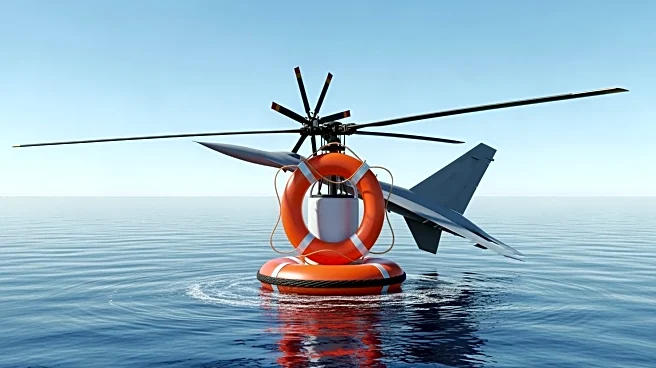What's Happening?
A U.S. Navy Sea Hawk helicopter and an F/A-18F Super Hornet fighter jet crashed separately in the South China Sea, as confirmed by the U.S. Pacific Fleet. The incidents occurred within half an hour of each other during routine operations from the aircraft
carrier USS Nimitz. All crew members from both aircraft were safely recovered and are in stable condition. The crashes have prompted questions about the timing and reasons behind these incidents in a strategically important region. President Trump, speaking to reporters, mentioned that bad fuel might be a factor, although investigations are ongoing.
Why It's Important?
The crashes in the South China Sea, a region of significant geopolitical tension, highlight potential vulnerabilities in military operations. The U.S. is shifting its focus from Europe to the Indo-Pacific, where the South China Sea is a contested area with heavy trade routes and increasing Chinese influence. The incidents could impact U.S. military readiness and strategy in the region. Analysts suggest that the simultaneous crashes are unusual and warrant a thorough investigation to rule out any systemic issues or external interference.
What's Next?
The U.S. Navy is expected to conduct detailed investigations to determine the causes of the crashes. This will likely involve analyzing the recovered aircraft and debriefing the pilots. The findings could influence future military operations and training exercises in the region. Additionally, the incidents may prompt discussions on the security of digital supply chains and the operational readiness of aging military equipment like the USS Nimitz, which is scheduled for decommissioning next year.
Beyond the Headlines
The crashes underscore the complexities and risks associated with carrier operations, especially in contested regions like the South China Sea. The incidents may lead to increased scrutiny of military protocols and the reliability of equipment used in such strategic areas. There is also a potential for heightened tensions with China, given the geopolitical significance of the region.
